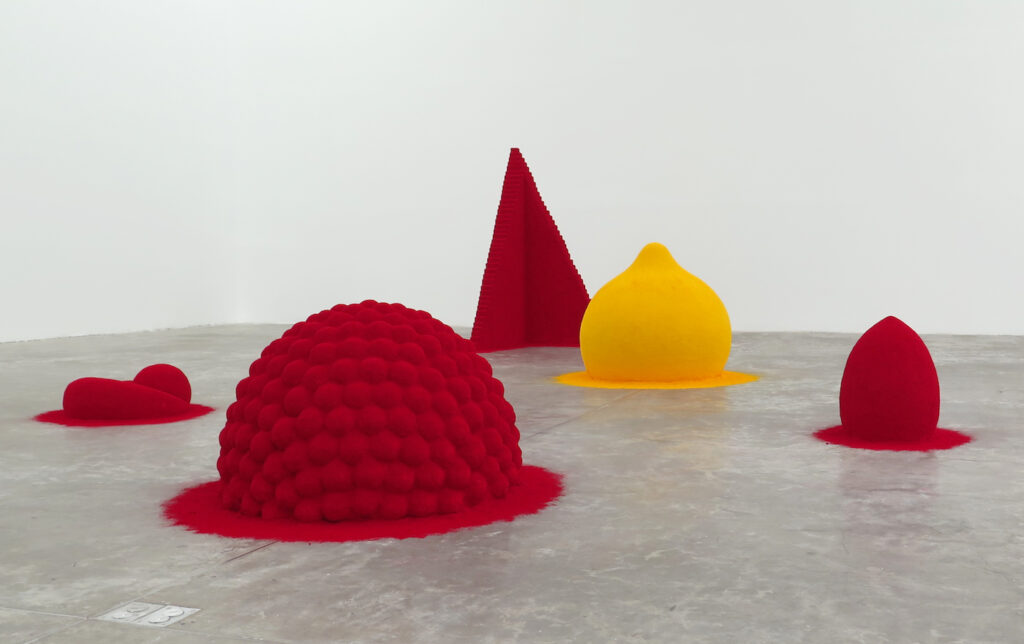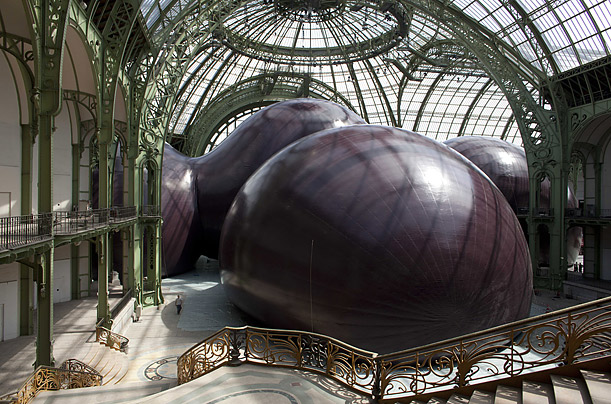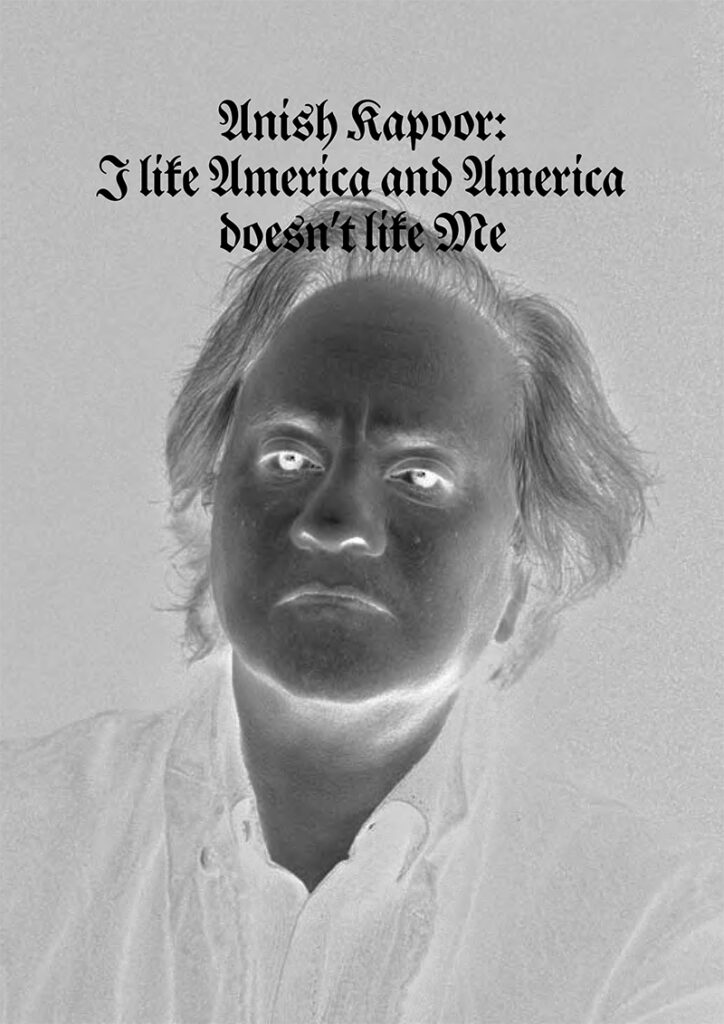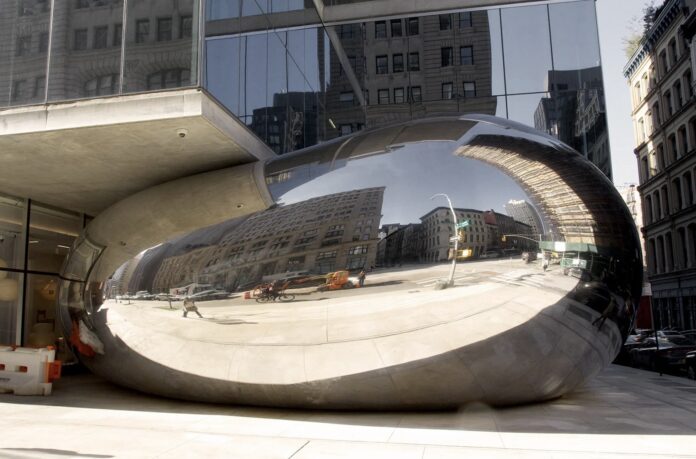Anish Kapoor’s installation has been completed at the base of the 56 Leonard Street skyscraper designed by Herzog & de Meuron. The British-Indian artist conceived his first permanent art project in New York in 2019, but due to its complexity and pandemic-related restrictions, the idea has only just been realized.
The recognizable “bean” refers to earlier work by Anish Kapoor, such as the Cloud Gate public sculpture in Chicago. Its design is based on thirty-eight stainless steel panels, which are interconnected using a patented seamless finishing technology.
The 40-tonne installation The Bean has a smooth, mirror-like surface that reflects the sky and cityscape. In addition, this effect encourages the viewer’s curiosity and creates an ever-changing visual experience, allowing for a short break from the rhythm of the metropolis.
The sculpture for 56 Leonard Street, designed by Anish Kapoor, will be “one of the greatest works of public art in New York and internationally.”
The sculpture for 56 Leonard Street required great precision. The welding process and the creation of a smooth flowing surface, and the use of precision components increased the installation process and doubled the cost of the sculpture.
Anish Kapoor is a contemporary British-Indian artist and sculptor, winner of the Turner Prize in 1991. Anish Kapoor rose to prominence in the 1980s for his geometric or biomorphic sculptures, which he created using deliberately simple materials (granite, limestone, marble, stucco, etc.).
The A Thousand Names series of sculptures features geometric shapes made from various materials and covered in bright colors. At the same time, these works by Anish Kapoor are characterized by the “sloppy” use of coloring pigments. The paint covers both the object itself and the floor, walls, etc. uniting the space of the gallery and sculpture into a certain common unit.

In 1990, Anish Kapoor represented England at the Venice Biennale, where he was awarded the Premio Duemila. In Venice, the sculptor presented his work Void Field, which was noted for its significance and diversity of possible interpretations.

In 1995, Anish Kapoor began creating sculptures in highly reflective polished stainless steel. Sculptures made of this material create the effect of a “distorted mirror”, reflecting the objects around them, and so on. changing their appearance depending on the place where they are installed. Examples of such sculptures are Taratantara (Gateshead, England, 1999), Parabolic Waters (next to the Millennium Dome, Greenwich, 2000), and Marsyas (Tate Modern Turbine Hall, 2002).

In September 2009, Anish Kapoor became the first living artist to have a solo exhibition at the Royal Academy of Arts. The audience could see both the master’s old and new works. In particular, the installation Shooting into the Corner was presented here.
On May 10, 2011, as part of the fourth exhibition of the Monument (Monumenta) at the Grand Palais in Paris, Anish Kapoor presented his sculptural composition Leviathan. The work repeated the previous ideas of the sculptor, giving them a new grandiose scale.

Kapoor’s “Beast” was made of 35-meter balloons covered on the outside with dark purple leather. At the same time, visitors could get inside the Leviathan, feeling themselves in the red womb of the biblical monster.
In 2011, Anish Kapoor presented his installation “Dirty Corner” at the Fabbrica del Vapore in Milan. The work was a steel pipe 60 meters long and 8 meters high. As in the case of Leviathan, visitors could enter inside the object, while moving forward, the viewer plunged into darkness, losing the perception of space.
Anish Kapoor is a Commander of the Order of the British Empire and a member of the Royal Academy of Arts of Great Britain.
In 2017, Anish Kapoor presented his work “I Like America and America doesn’t like Me.” The work is a self-portrait of the artist with a corresponding inscription. The font is stylized as Antiqua-Fraktur (traditionally, this font is associated with fascism, because it was used by the leadership of the Nazi party in Germany during the time of Hitler). Conceptually, the work was the artist’s protest against the migration policy of US President Donald Trump.


























